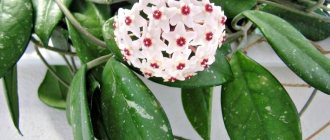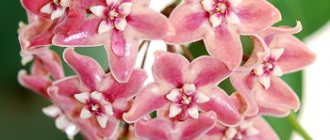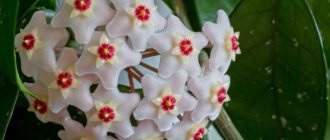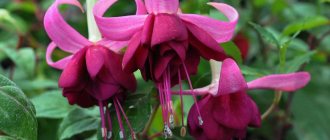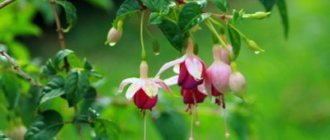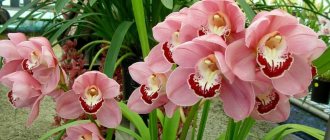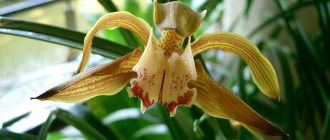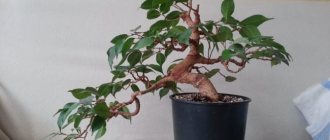Hoya is an exquisite evergreen tropical plant, a liana in which the surface of the leaf blade is as if covered with wax. It is perfect for landscaping an apartment and, with its decorative effect, gives the room in which it grows a unique coziness. Housewives often call Hoya simply - wax ivy. Caring for Hoya at home is quite simple, because wax ivy is considered a very unpretentious plant. She is not capricious and is grateful for the slightest care from her owner.
Soil for hoya: selecting the soil mixture for wax ivy correctly
Suitable soil is one of the main conditions for successfully growing indoor flowers, especially when it comes to exotic representatives of the flora.
After all, hoyas are not quite familiar plants to us, but wax ivies, epiphytic inhabitants of the tropics and subtropics. In nature, many of them wrap their shoots around stronger tree-like specimens, using them as a support. But they feed on their own, extracting nutrients from the soil and air. What should the soil be like for hoya grown at home? What features of these epiphytes is best for a gardener to know in advance?
Description
Hoya is a beautifully flowering evergreen vine. At home it grows to a maximum height of 5 – 6 meters. Young leafless shoots of the vine are brown with shades of purple. As they grow older, when young leaves and aerial roots begin to appear on them, the shoots turn green, and then, over time, become woody. The leaves of the vine are leathery, with moderately pronounced fleshiness, as if covered with wax, with small inclusions of gray color. Different species of Hoya have leaves of different sizes and are colored in different shades of green. The leaves, shiny at a young age, gradually become dull. They are ovoid, oval or heart-shaped and have fleshy, leathery axillary inflorescences. Hoya flowers are collected in umbrellas. Sometimes up to 50 flowers are collected in one umbrella. The flowers have different shapes, but all have five rounded petals. The diameter of each flower is 1–2 cm, except for the flowers of Hoya imperatoria, which reach 8 cm in diameter. In the center of the corolla of the flower there is a five-membered crown rising above the petals. The flowers are velvety in appearance, white, brown or greenish in color. Each bud blooms and stays in the inflorescence for about three weeks, after which a new flower appears in its place. Hoya blooms at the end of May and blooms all summer and half of autumn. During flowering, a huge amount of nectar is released - Wax Ivy is a honey plant. At the peak of flowering, its aroma can drive any gardener crazy!
This is a completely harmless flower. It is not part of the poison ivy family. The plant does not suppress the growth of other flowers in the apartment. Many psychics claim that this beauty, with her energy, reduces aggression and rivalry between everyone who neighbors him. Therefore, wax ivy can be found in almost all office buildings to create a calm working atmosphere. Very rarely, the fragrant smell of a flowering plant causes a headache. Allergy sufferers also need to be careful when contacting Hoya flowers so that they do not cause dermatitis on the skin. But in general, you will get a lot of pleasure and a cozy atmosphere in your home from growing Hoya!
A little about the beauties-hoyas
Hoya is a genus of evergreen tropical plants from the Lastovneve family. They are found in nature in South Asia, the islands of the Malay Archipelago, and the tropical forests of Australia and Polynesia.
Most representatives of the genus are strong, climbing vine-like plants, less often - shrubs, with glossy, bright green foliage. It blooms profusely, with clusters of calyx flowers that have an intense aroma, especially pronounced at night.
The genus has about 2 hundred species, however, two of them are most often grown as indoor and greenhouse flowers - hoya carnosa (fleshy) and beautiful (bella).
Signs and superstitions associated with the flower
Back in the 70s of the last century, many lovers of indoor plants were fond of growing Hoya, but now this flower is undeservedly forgotten, most likely, this is due to the multiple superstitions that “hover” around it. So from some sources you can find out that Hoya scares away men. Others tell us that she is an energy vampire, and no other plant can grow next to her, and also that in the house where Hoya grows, quarrels and scandals are frequent guests. This can probably be said about any indoor flower growing in a house where not all is well.
It’s more pleasant to read other signs: it is known that the Hoya plant will ensure your family happiness, for this you just need to put a flower in the bedroom, and peace and quiet will settle in your home forever.
In fact, everyone decides for themselves what flowers they like, grow them themselves or just admire them; only their own taste and liking matters here.
What should the soil be like for hoya?
If we talk about the popular types of hoi - carnose and bella, they are relatively unpretentious and not particularly sensitive to the quality of the soil. However, in the collections of flower growers there are also rarer and capricious varieties. And in addition, it is important to take into account the exotic origin of the plant, because if the maintenance is seriously violated, the vine will not only not bloom, but may also stop growing and even die.
Attempts to grow this exotic plant in garden or garden soil most often fail, which means it is still worth paying more attention to this aspect. For better results, it is recommended to prepare a breathable, moderately light and nutritious substrate yourself.
Recipe No. 1
The multicomponent composition makes it possible to make the mixture most suitable for epiphytes. The following ingredients will be required:
It is recommended to add a little dolomite flour, charcoal and pieces of pine bark to the resulting substrate.
Recipe No. 2
Hoya soil can be prepared from fewer ingredients:
Additional desirable ingredients are sphagnum moss, shredded bark and charcoal.
Recipe No. 3
Some Hoya owners have abandoned the use of traditional products - sphagnum, coconut coir and bark. There is also a substrate option for these epiphytic plants; for this, the following products are mixed in equal parts:
You can add part of “Ceramis” to the composition - a natural clay granular soil, which is suitable for growing indoor and garden vegetation. The granules absorb moisture when watering and function as a natural automatic watering system.
But, even without the last ingredient, the soil substrate turns out to be moisture- and water-permeable.
Recipe No. 4
The soil for hoi has similar properties to the substrate for orchids, so sometimes gardeners take the simple route, mixing ready-made soil for orchids with ordinary soil from the garden. But, hoyas require a substrate of a more complex composition, so it is best to add organic and inorganic components to mixtures for orchids:
There are many variations in the composition of soil mixtures for Khoi, however, it is worth considering the variety of your pet, since the needs and preferences of epiphytes of different species and varieties may vary.
Watering
The basic rule when watering is that the soil should be moderately moist. The top layer of soil is allowed to dry out. At the same time, stagnation of water in the pot is completely unacceptable and can lead to rotting of the roots and death of the plant. This is especially true in winter at low temperatures.
It is recommended to water with soft, well-settled (at least 24 hours) water at a temperature of +30° - +35°.
A warm shower is beneficial for the plant, especially in the hot summer.
In winter, the frequency of watering is reduced, but not allowed to dry out.
The nuances of growing epiphytes and tips from experienced gardeners
Experienced Hoya owners usually resort to various kinds of experiments and, through trial and error, find out what is best for their exotic pets. You can resort to their recommendations and advice to avoid possible mistakes:
Hoya compacta and Kerry are not particularly demanding and feel good in any loose soil, the main thing is not to let it become waterlogged. But, they need additional feeding more than others.
Regardless of the type of plant and soil substrate used, there must be drainage at the bottom of the pot. Many gardeners do not recommend using expanded clay for these purposes, as it retains water. The simplest drainage is considered to be polystyrene foam; it can be left after purchasing household appliances, and then placed in pieces on the bottom of the container.
Hoyas can be fed with long-acting fertilizers for flowering crops. But mixtures for tomatoes are also “tasty” for these epiphytes; their sodium-fluorine-potassium ratio is perfect for these flowers.
Temperature
Hoya is a heat-loving plant, and in summer the temperature for it is maintained at +22o - +25o, and in winter - a conditional dormant period - +12o - +15o. Lower temperatures in winter promote more active flowering in summer. The decrease in temperature should be gradual.
In addition to a comfortable temperature, Hoya needs fresh air, of course, without drafts and sudden temperature fluctuations.
For Hoya beautiful, the temperature should be high at any time of the year. Lower temperatures cause leaves to fall.
Substrates for hoi
| Quote |
| Joker writes: You can add calcium for some types (dolomite or broken shells). |
And I really liked the “Gardens of Aurica” at one time. I had many sitting in it, I only picked out pine needles and moss before planting.
In the section “Palmaceae family” there is an article about care. Excerpt about soils: “In what soil should I plant a rooted cutting? There is no universal recipe. Firstly, the preferences of the Khoi, determined by their natural origin, are very diverse. Secondly, they quite successfully adapt to the preferences and material capabilities of their owners. There are people who quite successfully grow hoyas in the most ordinary soil from a flower shop. However, most still try to create more suitable conditions for their plants. Therefore, we advise you to approach this issue creatively. Try to learn as much as you can about the natural origins of your plant, and don't let anyone's practical advice override your logical thinking. This is not always justified. For many Hoyas, a mixture of the following composition is suitable:
* 1 part perlite or vermiculite; * 1 part of fine expanded clay; * 1 part sphagnum moss or peat; * 2 parts regular plant soil.
For varieties that are sensitive to drying out, you can add more sphagnum moss. You should not add sand to the mixture, as this will cause it to dry out and cake faster. But sensitive and fastidious H. serpens and H. curtisii, for example, will feel much better in an orchid substrate or a substrate based on coconut fiber. Some collectors grow all their hoyas in orchid substrate. Some people fill the pot halfway with it. As a filler for the remaining space, garden soil mixed with slaked lime or a soil mixture containing the above ingredients in one ratio or another is used. All Hoyas need a breathable substrate. The final choice is yours. "
Epiphytic plants in potted plants need a very air- and water-permeable substrate, which is also coarse and at the same time light, and also contains a lot of humus. The substrate should be well soaked and dry relatively quickly. As a base, you can use a mixture for orchids or anthuriums. This mixture should be improved in content with various additives, and the lightest components should then be blown out or removed by sifting. Sand, stones and clay shards are not suitable for the Khoya mixture. A fairly good earthen mixture can be obtained by mixing the following components:
Organic components (acidic): - ready-made flower mixtures (for orchids or anthuriums) - pieces of peat (2-5 mm) (used in filters for ponds) - pieces of peat (5-20 mm) (used in filters for ponds) - bark pine (medium size) - sphagnum
Inorganic components (neutral): - charcoal (5-15 mm) - mineral soil for aquariums - pumice pebbles (2-6 mm) - zeolite - expanded clay for hydroculture (4-8 mm) - expanded clay "Ceramis" - foamed polystyrene closed cell (pillow filling)
For terrestrial species of Hoi (Eriostemma group), a little more limestone is added to the earthen mixture, for example, well-washed shells. But still, every Hoi lover should experimentally find out the optimal soil mixture for his plants. Alternatively, hoyas can be converted to hydroponics/hydroculture, but the water level and fertilizer content in the solution should be low. Growing epiphytic plants and succulents hydroponically is a matter of taste. But isn’t it surprising to you that hoyas feel great both in dry, humus-rich soil and in water?”
Source
Common diseases and pests
With proper care and in optimal conditions, Hoya almost never suffers from attacks by pathogenic fungi and insect pests. Problems only begin when the grower forgets about the plant. Simple preventive measures will help reduce the risk of infection to a minimum:
- quarantine for newly acquired indoor plants;
- inspecting the collection at least once every 5–7 days and immediately isolating all presumably infected specimens with suspicious symptoms;
- regular ventilation of the room, cleaning leaves from dust;
- using only disinfected soil, clean dishes and tools;
- compliance with the rules for caring for the plant, especially with regard to watering.
Table: diseases and pests from which hoya suffers
| Disease or pest | How it manifests itself | How to fight |
| Powdery mildew | A thin layer of whitish coating on the leaves. Then they lose their tone and turn yellow. |
|
| Root rot | Blackening bases of shoots. The fabrics soften, the soil in the pot becomes covered with a thin layer of mold, and a putrid smell appears. |
|
| Shchitovka | Hard brownish tubercles on the leaves that quickly increase in volume. The surrounding tissues acquire a red-yellow tint. |
|
| Aphid | Colonies of small yellow-green or black-brown insects clinging to the tops of shoots, the underside of young leaves, and buds. |
|
| Whitefly | Small whitish butterflies that fly up from a flower whenever you touch it. |
|
| Spider mite | Thin cobwebs entwining leaf petioles and shoots. On the underside of the sheet there are small beige dots and vague light spots. |
|
| Root nematode | Small spherical swellings on the roots, black on the cut. The leaves turn yellow, then turn red and become covered with black spots. |
|
Botanical portrait
Hoyas are perennial plants with climbing, climbing, and sometimes drooping stems. Their leaves are fleshy, leathery, deep emerald in color, with a characteristic sheen, up to 20 cm long, 5 cm wide, located oppositely along the pagons.
The flowers have a complex structure, are snow-white, cream, lemon yellow, pink or salmon-scarlet, collected in axillary inflorescences. The corollas are five-lobed, the petals are fleshy, smooth, and feel like velvet.
The most popular types in indoor culture are:
Hoya propagation at home
Flower growers practice sowing seeds and rooting stem cuttings. With a certain amount of patience, it is possible to grow hoya from a separate leaf blade. Before propagating hoya at home, you need to familiarize yourself with the existing methods of obtaining new plants.
The best time to propagate hoya is the beginning of the growing season. Although the plant does not have a pronounced rest period, during the cold season of the year the growth processes of the vine slow down. With the arrival of spring, hoya can be propagated more effectively, although you can experiment with rooting shoots in other months, but not at the time of flowering.
Hoya: propagation by cuttings
The cuttings are cut from a healthy pagon.
It should be short - 5-6 cm, consist of two internodes and 1-2 pairs of leaves. The lower leaf blades are removed, leaving only the upper pair. Before rooting the hoya, the cutting is dried for a couple of hours, then the cut is treated with a root formation stimulator - heteroauxin, zircon or root and buried in a soil mixture or in a vessel with water. Substrate options for rooting cuttings:
A bowl with a cutting placed in water or a substrate is covered on top with plastic film or glass and regularly moistened with a spray bottle; do not forget to ventilate quite often. Experienced gardeners use plastic bottles with the bottom cut off and provide air access by unscrewing the cap.
The vessel with the rooted cuttings is placed in a warm place where it is possible to constantly maintain a temperature of 22 degrees Celsius. The roots will appear after 2 weeks. The plant is transplanted into a separate pot without waiting for the root system to develop, because, as they lengthen, the fragile roots easily break during transplantation.
Hoya propagation by leaf
A leaf that is healthy and young is selected, and it is cut off with a small fragment of the petiole - this is where the growth point is located.
This is important because, cut off at the very base, it will remain a leaf blade sticking out in the ground, albeit with roots, and will not form a shoot. The method of obtaining a new specimen from a separate leaf is similar to how hoya is propagated by cuttings. The planting material is also dried and treated with root or other root formation stimulant. The composition of the soil mixture is the same, however, several leaves are planted in a tight pot and fed periodically. It will take a long time, about a year, before a pagon forms from a rooted leaf.
Growing Hoya from Seeds
In indoor conditions, the pollination process is difficult, and it is almost impossible to become the owner of planting material. However, if you're lucky, you can purchase it at a specialty store or order it from suppliers. Hoya seeds in the photo look small, hemispherical in shape and dark chestnut in color, with a characteristic fluff, like a dandelion. They ripen in small pods. They should be sown in a soil mixture consisting of leaf and turf soil mixed with chopped sphagnum moss in the year of collection.
Shoots appear quickly, in about a week. The soil is constantly watered, but make sure that excess water flows into the pan through the drainage holes. The container with the seedlings is kept in a warm corner of the room, and after about 3 months the plant with 2-4 leaves is planted in separate containers. To prevent fungal infection, periodically spray with Bordeaux mixture.
Knowing how to grow hoya from seeds, many new specimens are obtained, but this method is not entirely suitable for hybrid plants - the parental characteristics of the variety are often lost.
Air humidity
Hoya needs air humidity slightly above room temperature. This can be easily achieved by regular spraying with settled water in the morning.
If in the winter months the hoya is kept at a lower temperature, then spraying is stopped.
Good lighting is important for a healthy plant
Hoya transplant at home
Hoya does not like frequent transplants. An adult plant is moved to a new substrate once every 2-3 years, young specimens - annually. It is always important for a novice gardener to know what kind of pot is needed for hoya and how to plant the plant correctly, selecting the most necessary components to compose the soil mixture.
Choosing a pot and transplanting time
The succulent grows poorly in spacious containers, weakly increases its vegetation mass, “sits” in place for a long time and refuses to bloom. Therefore, it is advisable to plant the plant in a small pot. The material from which it is made does not play a significant role. The gardener just needs to remember that moisture evaporates from a clay container faster than from a plastic one, and the watering regime will have to be adjusted accordingly.
When to replant hoya is also important. You should not start replanting on the eve of the winter season; it is better to wait until spring.
Plants moved to a new soil mixture in the fall do not take root well and often die over time, never recovering from the replanting measures.
Earth mixture for growing hoya
Soil for hoya can be purchased from a specialized flower shop or you can make your own substrate. The following selection of components is possible:
For planting more mature plants, add 0.5 parts of humus. The Hoya is watered well the day before so that no problems arise when removing the flower from the old pot.
For Hoya beautiful, you need a slightly different composition of the soil mixture - 1 part each:
How to plant hoya correctly?
It is advisable to disturb the roots to a minimum; if possible, use the transshipment method. The root collar is buried at the same level as in the previous container. Place the plant in the center of the pot, holding it with one hand, carefully add soil so as not to damage the roots. If the hoya has long stems, before moving the plant to a new container, strengthen the support in it, and then plant the flower so as not to injure the root system by driving a peg into the substrate.
The main condition for replanting is that the soil for hoya should be loose, air- and moisture-permeable, with a neutral or slightly acidic reaction.
News:
Yandex Disk - creating an album, uploading photos Please do not upload photos to Yandex, links to photos in messages disappear after a day!
- Website
- Encyclopedia Catalog of indoor plants
- Catalog of flowerbed plants
- Catalog of garden plants
- Plant families
- Plant classification
- Plant morphology
- Plant nomenclature
- Glossary
- Flower forum on FloralWorld.ru »
- Cacti and other succulents »
- Lastovnevy family (Asclepiadaceae) »
- Hoya »
- Topic: Hoya, exchange of experience and growing methods
- Seal
Author Topic: Hoya, sharing experiences and growing methods (Read 234887 times)
0 Users and 1 Guest are viewing this topic.
- Seal
- Flower forum on FloralWorld.ru »
- Cacti and other succulents »
- Lastovnevy family (Asclepiadaceae) »
- Hoya »
- Topic: Hoya, exchange of experience and growing methods
Related topics (5)
| Colorful Hibiscus (Hibiscus) – discussing the features of indoor growing |
- SMF 2.0.14 | SMF © 2015, Simple Machines
- Site Map
- XHTML
- RSS
- mobile version
When using the site materials reference to the site is required!
© www.floralworld.ru 2006-2016, Marina and Alexander Mityaev
The page was generated in 0.377 seconds. Requests: 37.
| Replies: 1404 | 24 January 2022, 20:25:21 from Larissonchik | |
| Sparrmania, indoor linden - Sparrmannia, discussing the features of cultivation | Answers: 36 | 14 January 2012, 17:18:57 from Ky! |
| Plumeria, plumeria – Plumeria, we discuss the features of cultivation | Replies: 309 | 21 July 2022, 20:54:06 by CreatiFFchik |
| Epiphyllum, epiphyllum - Epiphyllum, discussing growing conditions | Replies: 448 | 09 October 2022, 15:48:56 from Cattleya |
| Schlumbergera, Zygocactus - Schlumbergera, we discuss the features of cultivation | Replies: 1492 | 06 March 2022, 10:06:33 by ayrel-ka |
Hoya: home care with photos
It is easy to care for the plant. The basic techniques for caring for hoyas are no different from caring for many succulents.
Accommodation requirements
Liana prefers brightly lit places in the apartment. But the impact of scorching rays on the surface of the sheet plates must be excluded. Window sills of south-eastern or southern windows are suitable, provided there is diffused light.
The plant should not be disturbed by frequent rotations around the axis of the flower container.
The temperature preferences of the succulent are moderately warm. In the autumn-winter period it is kept at temperatures of at least 12 degrees Celsius. In summer, plants are not happy with the intense heat; they wilt and look depressed if they are not immediately helped by spraying. They respond with gratitude to moving to the garden or balcony, where they stay during the warm season. When night temperatures drop to 15 degrees or slightly lower, hoya is brought into the house.
Watering and spraying
The moisture regime for growing different types of hoya is different. Plants with hard leaves are watered after the top layer of the earthen clod has dried a few centimeters. Hoya southern needs constantly moist, but not soggy soil.
Varieties with thin and pubescent leaves prefer to grow in dry soil mixture and partial shade of western windows. However, acidification of the soil in the pot must be avoided.
The plant is favorable to spraying, however, as the room temperature drops and daylight hours decrease, the need to increase air humidity disappears.
Feeding Hoya
Plants are regularly fed with a mineral complex for beautifully flowering succulents. Add it to irrigation water in strict compliance with the proportions specified by the manufacturer on the packaging. The frequency of feeding is maintained no more than once a month.
Before fertilizing the hoya, water it well the day before. Some gardeners are interested in whether there should be calcium in the nutritional composition. Most experts agree that the plant does not respond well to hard water and, therefore, is not at all favorable to this element.
Many people are also concerned about the question of whether Hoya needs pruning. The plant is pruned in the spring in order to initiate the development of lateral branches and give the vine a more magnificent shape.
How to make hoya bloom at home
Many flower owners complain that hoya does not bloom. How to care for hoya to enjoy amazing fragrant flowers every year? Flower growers with experience in growing wax ivy advise keeping the plants in a cool winter, providing them with a rest period, watering them very rarely, and not feeding them at all. If the plant overwinters in a warm place, there will be no flowers.
After the hoya petals wither, the flower stalks are not cut off - in the next season, umbrellas of inflorescences will form on them again.
Fertilizers for hoya with a high nitrogen content prevent the formation of buds. It is preferable to choose preparations where there is either no nitrogen at all or a very small amount.
Possible problems in growing
Mistakes in caring for hoya include overmoistening the substrate. As a result, the root system, and then the entire plant, is damaged by fungal diseases. Due to lack of lighting, the vine develops slowly and refuses to bloom. And when the temperature in the room where it is kept drops below 15 degrees, it sheds its leaves.
Among the pests on hoyas, scale insects, flat mites and aphids were noticed. Repeated treatment with insecticides helps get rid of them. It is more difficult to fight root nematodes - they are difficult to notice, and when the reason for the poor condition of the plant becomes clear, it is too late to save the plant. Therefore, it is necessary to pay attention to preventive measures - disinfection of flower containers and purchased soil mixtures.
Hoya has many fans. The waxy inaccessibility of its flowers always evokes admiration and surprise at this unusual natural creation. Caring for hoya at home is within the capabilities of anyone, even an inexperienced gardener. You just need to apply not so much effort. But how much grace there is in this monumental foliage and graceful umbrella inflorescences!
Source
Lighting
Hoya requires plenty of bright, indirect light for healthy growth and development. Exposure to sunlight in the morning is beneficial, but the plant needs to be shaded from the midday sun, as leaf burns are possible.
For variegated (variegated) varieties there should be more light. Succulent species tolerate partial shade well, but flowering in this case is more sparse.
Daylight hours in summer should be at least 14 hours, in winter - at least 10 hours. If necessary, the plant is provided with lighting.

